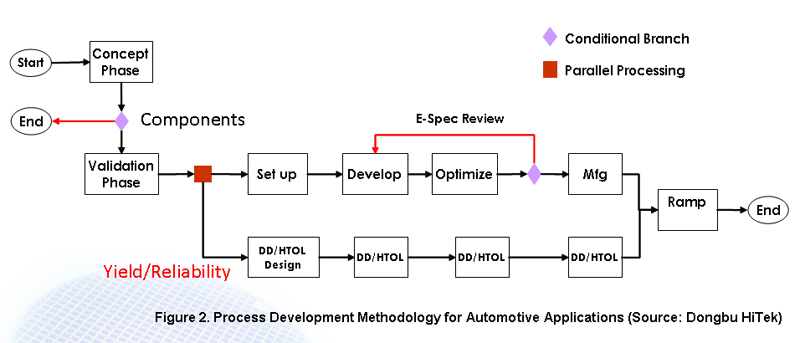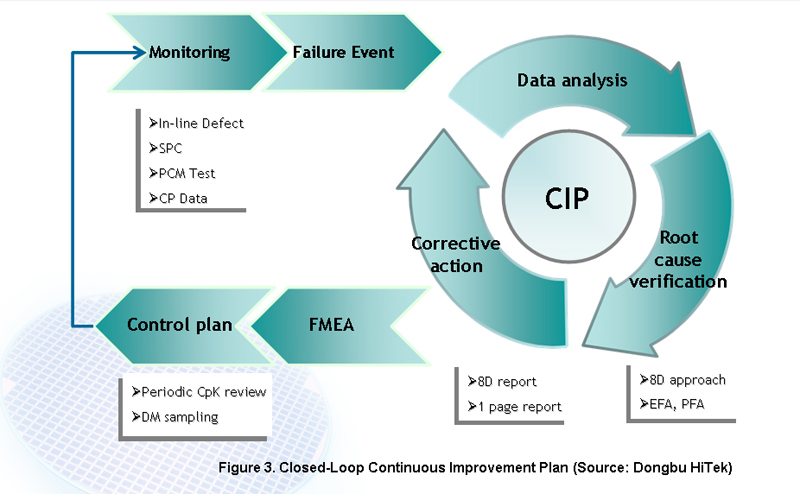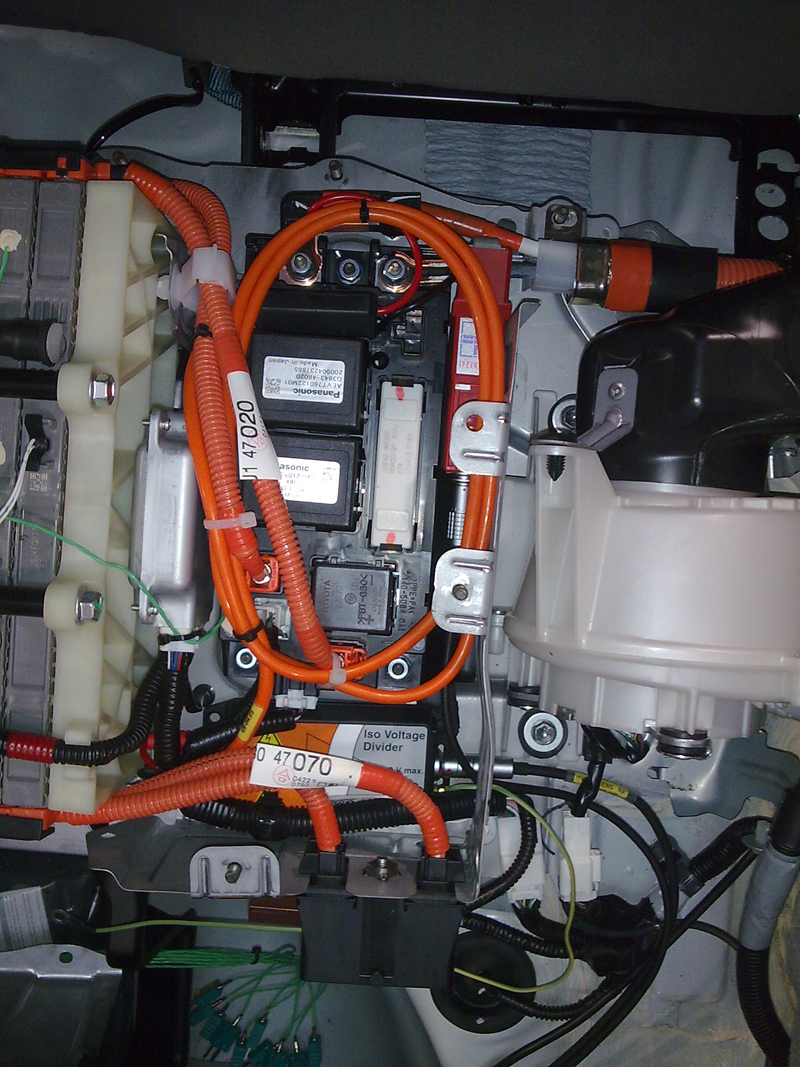Author:
Jun Liu and Zaki Moussaoui, Intersil Corporation, Milpitas, CA
Date
08/15/2011
A main challenge for an automotive power system designer is to deal with the 12V car battery voltage fluctuations. The battery voltage can drop significantly during load crank. This voltage drop can aversely affect the infotainment system and other electronic devices powered from the battery. Some of these devices would reset, while others, like brake lights, headlamps, or airbags, would became a safety risk and are not allowed to shut down or reset during these transient battery-low situations. The designers for automotive power systems have to seek schemes to keep the related power rails within regulation. Although the specification regarding the lowest voltage in cold crank varies according to different customer requirements, more and more system designers are looking for regulators capable operating from voltages as low as 3V or below. Manufacturers are now looking at saving any watt possible. The efficiency has to be high during steady state operation, even though the alternator is providing all the power, because of the need for full efficiency. The car's always-on functions like anti-theft system, keyless devices, CAN bus, etc., consume current from the battery continuously, so high efficiency in standby mode is also desired. In summary, the power IC is required to have very high efficiency at steady state load, at light load and during standby. Boost Buck Structure In order to deal with a large fluctuation of the battery voltage most system engineers will use a two-stage bus structure, with a boost as pre-regulator (see Fig. 1), this architecture provides a regulated bus for single or multiple buck rails powering various loads like LED lights, MCU, CAN bus, drivers, and displays. With this two-stage approach the boost converter is always running and the efficiency will always suffer. To solve this problem Intersil introduces a unique IC that only activates the boost when the output needed is higher than the input.

The ISL78200 is a synchronous buck controller with high side MOSFET and low side driver integrated. The ISL78200 can support a continuous load up to 3A (depending on duty cycle and ambient temperature) with wide input voltage range, 3V to 40V. The low side driver can be either used to drive an external low side MOSFET for a synchronous buck converter, or can be used to drive a boost converter as a pre-regulator for the buck, to handle the battery low situations. Fig. 2 (a) shows the boost buck configuration using the ISL78200. The threshold to start up the boost is programmable by setting the resistor divider R1 and R2 to sense the battery voltage. For example, consider an application where 5V is needed at buck output. With R1 1M and R2 130k, the boost starts to work when the battery drops below 7V and it stops working when battery recovers above 10V. Both the threshold and the hysteresis for recovering are programmable. In this way the boost output voltage is kept above ~7V (7V minus the boost diode drop). The load is never affected by the voltage dip in the battery. Fig. 2 (b) shows the test waveforms under the Fig. 2 (a) configurations, where the output voltage is regulated to be stable at 5V in the event of battery voltage dropping to 3V below. The IC actually can handle even lower voltage (<2V) because the IC is biased by the boost output voltage. Note the lowest voltage it can handle is also decided by the load current. With fixed load and output power, to keep the energy balance (Vin*Iin = Vout * Iout / Efficiency), the boost input current is higher when the input voltage is lower. The power ratings of the boost MOSFET and inductor have to be properly selected to handle the expected power.

Challenges for High Efficient and Low Quiescent Current Buck under High Input Voltage The challenge is to achieve high efficiency across the full load under a wide input voltage range. For switching regulators, the power loss is mainly the conduction loss in the heavy load. A MOSFET with low Rdson is required to achieve high efficiency in heavy loads. In light loads, the switching loss dominates. In automotive applications, switching frequency higher than 2MHz is desired in order not to interfere with the am band. With higher switching frequency, the switching loss dominates in the medium to full load range. The switching loss mainly includes MOSFET on/off transitions overlapping loss and driving loss. With higher input voltage, the driving loss is higher because the driving power is normally coming from an LDO also supplied by the input voltage. Higher input voltage means higher dropout loss in the LDO under fixed driving current. For example, with the total gate charge, Qg, of 20nC, Vin equal to 12V, Fs of 2MHz, and Vdrive of 5V, the total driving loss is 0.48W (Ptotal = Pdrive + P_LDO = Fs * Vdrive * Qg + Vdropout * Idrv = Fs * 5V * Qg + (Vin - 5V) * (Fs * 5V * Qg / 5V)); with the Vin at 30V and other conditions the same, the total driving loss is 1.2W. The ISL78200 feeds back the output voltage to the input of the LDO after startup. Let's say you have 5V output that is high enough to drive the MOSFET while the 5V is much lower than the high input voltage. With 5V at input of the LDO and same conditions mentioned above, the total driving loss is only 0.2W. You save a full1W, and the benefits provide higher efficiency. The IC thermal design is relieved because the LDO is integrated in the IC. The ISL78200 integrates an auxiliary LDO, the input of which is connected to Vout. It will switch from main LDO to auxiliary after the output is built up (see Fig. 3) thus saving the losses related to driving. Regarding the quiescent current concerns, PFM mode is a useful function. The IC shuts down most of the internal circuitries in order to achieve the lowest input current in standby mode. The output ripple does go higher in PFM mode.

The ISL78200 integrated high side MOSFET has Rdson as low as 120mOhm that helps to achieve the steady state heavy load efficiency. And it has selectable forced PWM mode or PFM mode. In system standby mode, it achieves low quiescent current as low as 180uA with feeding back Vout to the auxiliary LDO to provide the bias from Vout instead of Vin. The integrated auxiliary LDO boosts the light load efficiency for all configurations (sync or non-sync buck, also PFM mode). Fig. 4 shows the efficiency curves of forced PWM and PFM mode. Furthermore the extremely low shutdown current 2uA meets most designers' specifications in automotive ECU power systems. The harsh automotive environment and its electrical systems spec require a very special power IC. The ISL78200 with AECQ qualification meets these necessary requirements. On the top of that the ISL78200 also helps the designer achieve the overall efficiency of the car by improving efficiency under steady state, light load and standby mode, while supporting the large input battery voltage fluctuation. www.intersil.com